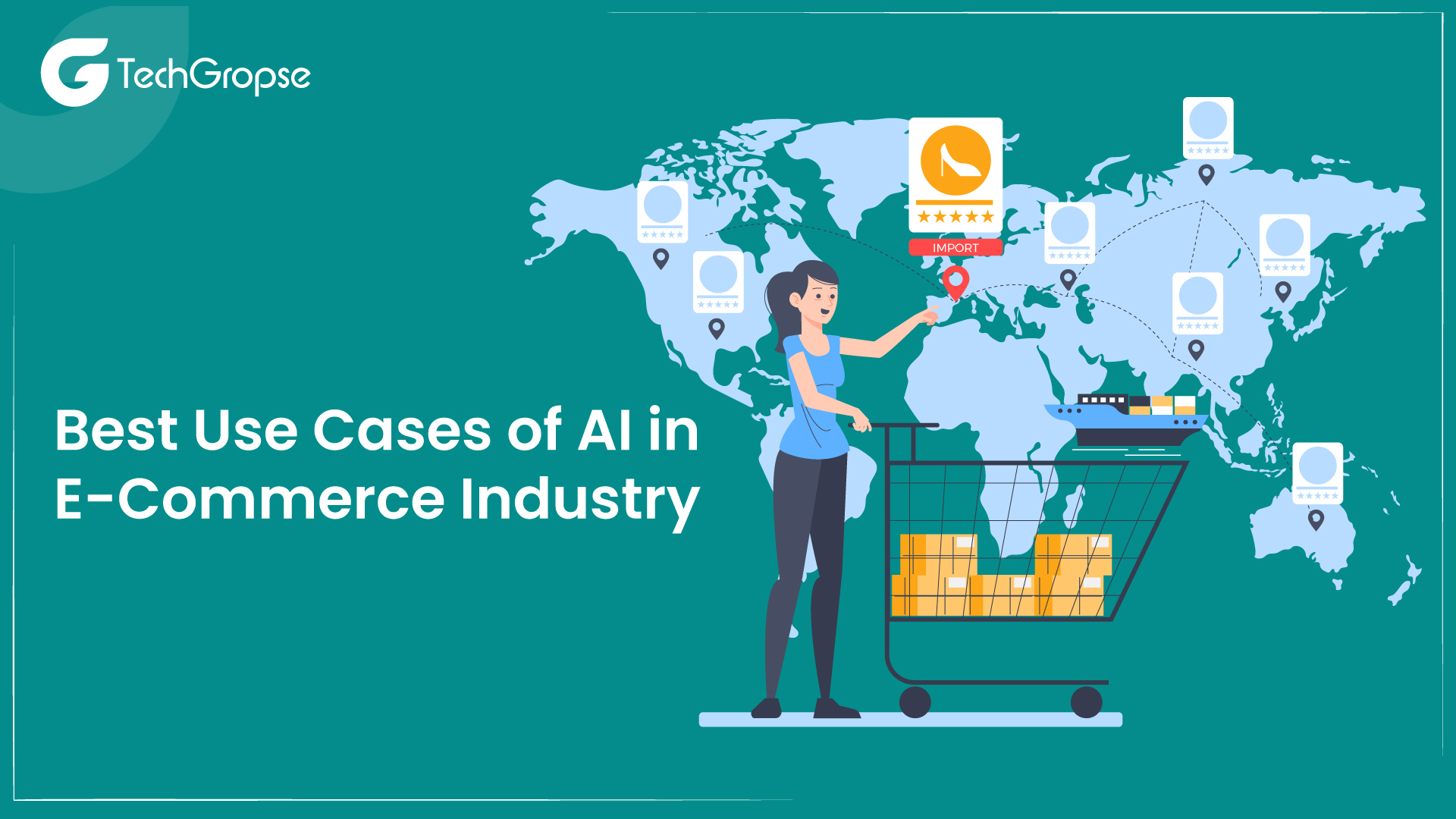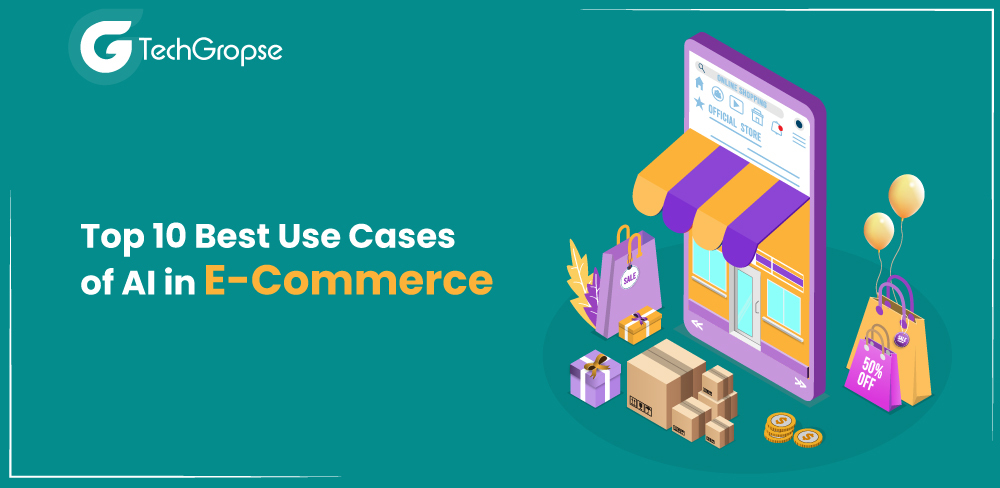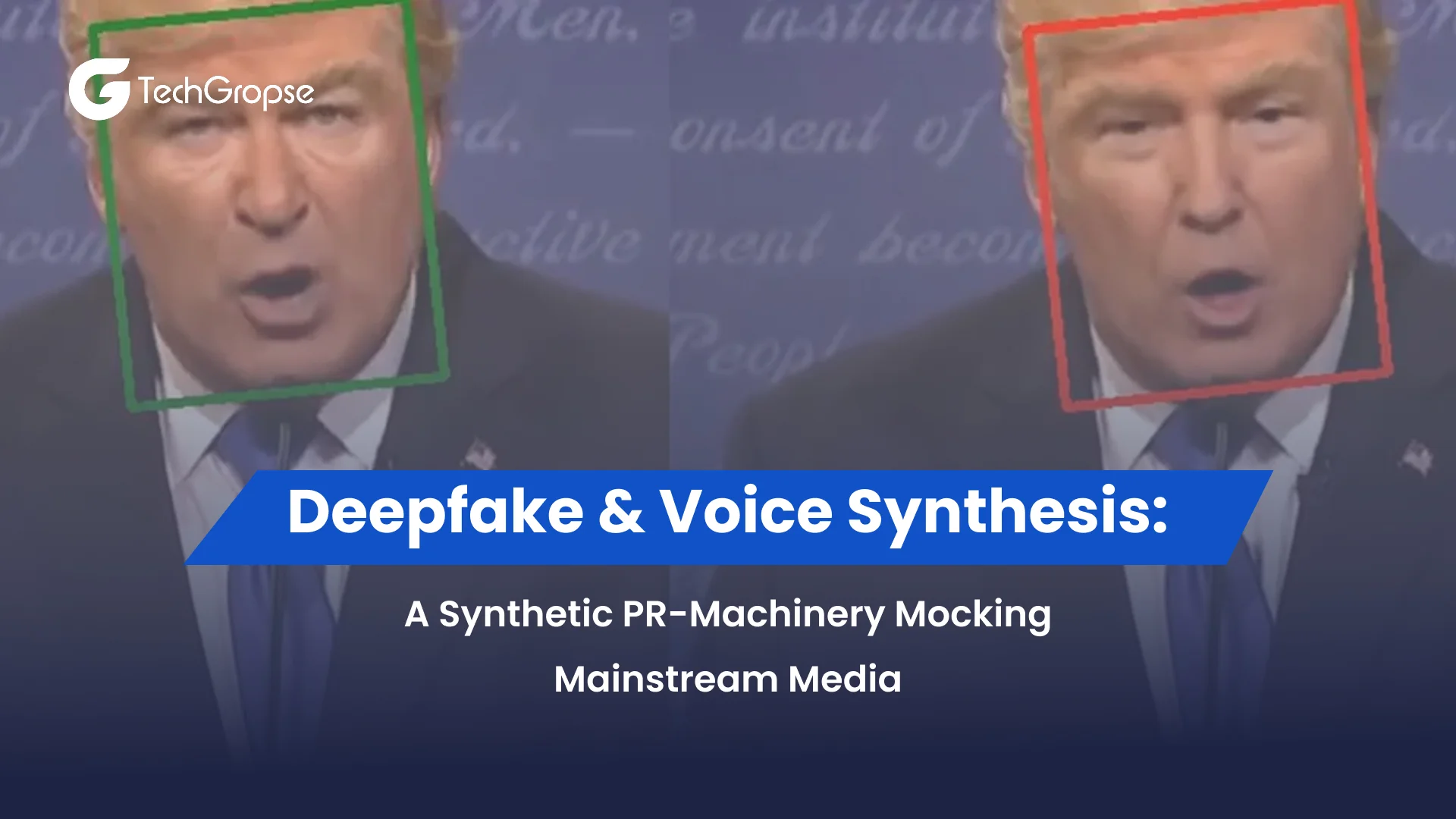| “If you have not been hiding in a cave, you have probably heard about this amazing thing called Artificial Intelligence (AI). It is like a super smart computer brain that is been popping up everywhere like AI in E-Commerce. And guess what? It’s even made its way into the world of online shopping world, which is pretty awesome.” |
The integration of ai in e-commerce has revolutionized how businesses operate and engage with customers. AI technologies have the potential to improve different characteristics of the e-commerce industry, ranging from personalized product recommendations and customer insights to simplified supply chain management and fraud detection.
Like, big companies including IBM and Facebook are awesome into this thing called artificial intelligence (AI). They are all like, “We wanna make AI a big part of our business!”
Google even purchased this company called DeepMind, which is all about AI too. This just goes to show that AI is gonna be a prominent player in the world from now on. It’s gonna be driving everything.
With the ability to explore extensive amounts of data and make intelligent predictions, AI brings a new era of efficiency and customer-centricity to the e-commerce landscape.
In this post, we will explore the top 10 best use cases of AI in e-commerce that have reshaped how online businesses operate, providing a competitive edge and improved customer experiences.
Best Use Cases of AI in E-Commerce Industry

Artificial Intelligence, or AI, is not just a thing of sci-fi movies anymore. It is a game-changer in the world of e-commerce. Generative AI in ecommerce refers to the simulation of human intelligence in machines that can execute tasks and make decisions without explicit programming.
In the e-commerce industry, AI is revolutionizing the way businesses interact with consumers and handle their operations.
These AI use cases in ecommerce deliver multiple advantages, such as increased sales, improved customer satisfaction, reduced operational costs, and improved competitiveness.
Let’s start!
1. Voice commerce
It is transforming the e-commerce world with some essential use cases. Firstly, it allows seamless product search and finds, allowing shoppers to use voice commands to see products efficiently and quickly.
Additionally, voice-activated shopping lists streamline the purchasing process as users can verbally add items to their wishlists and sync them with their mobile apps and e-commerce accounts.
Users can ask about fostering transparency and trust order status and receive real-time updates.
Features
- Speech recognition
- Natural language understanding
- Voice-enabled shopping carts.
2. Chatbots and Virtual Assistants
Lots of modern online stores have these cool chatbots on their websites to make shopping easier for you. When you visit their website, a little box pops up and asks, “How can I help you?”
Source: Google
You can type in any questions you have, and the chatbot will give you answers right away. It is like talking to a computer that knows everything. This is helpful because you can get help anytime, even if there are not any real people around to answer your questions.
Sometimes, when you are trying to choose whether to purchase something, you want answers right away. So having a chatbot AI in E-Commerce can make it easier for you to decide if you want to purchase something or not.
Features
- Natural language processing (NLP)
- Sentiment analysis
- Chatbot training for personalized interactions.
3. Generate Product Descriptions
Generating product descriptions using AI in ecommerce involves an organized approach. First, collect complete product data like product names, specifications, features, and any other appropriate details.
If you are using a machine learning tool, prepare your models on the gathered data and fine-tune them for accurate content generation. Design guidelines or templates with placeholders for product-specific information.
Use your AI and machine learning in ecommerce to generate descriptions, inserting the content into your templates for easy access. Human review and editing are essential to error-free content, and ensure coherence and alignment with your brand’s tone and style.
Features
- AI-powered content generation
- Data integration
- Template customization
- Language and tone control
- Product variation handling
4. Product Recommendations
It is a key feature in e-commerce, using AI algorithms to deliver customers personalized suggestions based on their past behavior and dealings. These recommendations not only improve the shopping experience but also greatly impact sales.
By analyzing user data like purchase patterns and browsing history, AI can accurately predict what products a customer might be interested in, virtually improving cross-selling and upselling opportunities.
Also, these recommendations encourage customer engagement and loyalty, as they present a brand’s understanding of individual preferences. In today’s competitive online marketplace, using AI-powered product recommendations is an effective strategy to boost income and give customers a tailored shopping journey.
Features
- Collaborative filtering
- Machine learning algorithms
- Real-time updates
- Cross-selling and upselling
- Feedback loop
5. Streamlined Supply Chain Management with AI
Managing inventory and forecasting demand can be a tough task for e-commerce businesses. That is where AI comes in. By analyzing market trends, historical sales data, and other relevant aspects, AI algorithms can accurately predict demand and optimize inventory levels.
This eliminates the risk of stockouts or overstocking, ensuring that businesses can satisfy customer needs efficiently.
AI does not just stop at inventory management; it also changes the way of logistics and delivery processes. From route optimization to real-time tracking, AI-powered systems can streamline the whole supply chain.
By reducing transportation costs, minimizing delays, and enhancing overall efficiency, AI makes the supply chain more reliable and cost-effective. With AI, e-commerce businesses can offer products to customers faster and more efficiently than ever before.
Features
- Demand forecasting
- Inventory optimization
- Route optimization
- Predictive maintenance
- Warehouse automation
6. Enhanced Fraud Detection and Prevention Using AI
Ever wondered how ecommerce app development keeps your transactions secure? Cue the amazing powers of AI.
In the world of online shopping, fraudsters are always looking for ways to creep in and wreak havoc.
But fear not! AI is here to save the day. Using advanced algorithms and machine learning, AI can analyze huge amounts of data to identify patterns and irregularities that may imply fraudulent activities.
By continuously learning from past happenings, AI systems become smarter and more efficient at detecting fraudulent transactions in real time. They can flag suspicious behavior, like suspicious IP addresses or unusual purchase patterns, alerting merchants to potential risks before any damage is done.
But AI doesn’t stop at just detection. It goes the extra mile in controlling fraud by executing AI-based security measures. These can include biometrics, multi-factor authentication, identification, and behavioral analysis to ensure that only legitimate customers gain access to e-commerce platforms.
With AI as the guardian of your online shopping experience, you can rest easy knowing there is a superhero actively fighting against fraudsters.
Features
- Anomaly detection
- User behavior analysis
- Geolocation tracking
- Machine learning models
- Transaction limits
- Rule-based systems
7. AI-driven Visual Search and Product Discovery
Lost for words? Let AI do the searching for you!
We have all been there – struggling to explain that perfect pair of shoes or that trendy armchair. Say hello to AI-driven visual search, making product discovery a breeze.
Sometimes words are not enough to explain. Trying to describe an item you have in mind can be frustrating, especially when you are not sure of the exact terms to use. That is where AI comes to the return with its visual search capabilities.
With AI technology, you can now simply snap a picture or upload an image of an item you like, and the system will do the searching for you. It will analyze the image, identify the product, and deliver you with appropriate options for purchase.
This AI-driven visual search not only saves you time but also enhances your overall shopping experience. It opens up a world of possibilities for finding similar products, exploring different styles, and discovering new brands that you may have otherwise missed.
So next time you can’t quite put your desires into words, let AI take the reins and find that perfect item you’ve been dreaming of.
Features
- Reverse image search
- Visual recommendations
- Multi-platform integration
- Enhanced user analytics
- Integration with augmented reality
- Filtering and sorting
8. Optimized Pricing and Dynamic Pricing Strategies with AI
Do you want to unlock the secret to pricing perfection with the help of AI?
Choosing the perfect price for a product can feel like chasing a unicorn. AI algorithms are here to save the day by taking the guesswork out of pricing.
Pricing products in the ever-changing world of e-commerce can be a challenging task. How do you choose the optimal price that will attract customers while still maximizing profits? Enter AI, your pricing guru.
AI in E-Commerce can analyze vast amounts of data such as customer behavior, market trends, competitor prices, and even external factors including holidays or weather. By crunching these numbers, AI can provide insights and recommendations on the ideal price point for your products.
But AI does not stop there. It can also help you implement dynamic pricing strategies. This means adjusting prices in real-time based on different aspects like inventory levels, demand, or even personalized customer preferences. By utilizing AI-driven dynamic pricing, you can ensure that prices are always optimized to drive sales and maximize profits.
So say goodbye to the stress of pricing decisions and let AI be your guide to pricing perfection.
Features
- Price optimization models
- Price elasticity analysis
- Inventory management integration
- Price transparency
- Price optimization models
9. Customer Service and Experience Enhancement
| AI: Your personal shopping assistant and customer service agent in AI in E-Commerce.
Have you ever wished for a personal shopping helper who knows exactly what you want? AI is here to make that dream a reality and improve your overall shopping experience.
|
Customer service plays a vital role in e-commerce. AI-powered automated responses and chatbots can manage routine customer inquiries, delivering quick and accurate answers to frequently asked questions.
It can also improve your overall shopping experience by leveraging personalization and recommendation algorithms. By analyzing a customer’s purchase behavior, browsing history, and preferences, AI in E-Commerce can offer customized suggestions and recommendations that match their individual tastes and requirements.
This level of personalization not only saves customers time but also increases their engagement and satisfaction with the shopping experience. With AI as your personal shopping assistant, you will feel like you have your own genie granting all your retail wishes.
Features
- 24/7 Availability
- Multi-channel Support
- Automated Responses
- Feedback Collection
- Empathetic Communication
10. Identifies Exceptional Target Opportunities
Determining excellent target opportunities in AI in E-Commerce can play a transformative role in business strategy. AI, through its data analysis capabilities and predictive algorithms, can uncover unique and potentially lucrative prospects that might be overlooked by traditional methods.
By analyzing vast datasets, AI can uncover customer preferences, emerging market trends, and competitive shifts with remarkable accuracy.
It can identify niches where a company’s products or services could find strong demand and devise strategies to capture these opportunities.
So sit back, relax, and let AI take care of your customer service needs while improving your overall shopping experience
Features
- Measurable goals
- Risk assessment
- Strategic planning
- Predictive algorithms
- Customer insights
The Benefits of Integrating AI in E-Commerce
So why should e-commerce businesses bother with AI? Integrating AI in e-commerce offers an expansive range of uses for businesses, customers, and the overall shopping experience. Here are some of the essential benefits of AI in E-Commerce:
- Firstly, AI allows businesses to deliver personalized product recommendations, improving the probability of customers finding exactly what they need.
- Additionally, AI can collect and analyze customer data, delivering valuable insights that help businesses tailor their marketing strategies.
- AI-powered virtual assistants and chatbots also improve customer support, providing quick and accurate assistance.
- Last but not least, AI streamlines supply chain management, optimizing processes such as demand forecasting and inventory management.
- Overall, integrating AI in e-commerce brings personalization, efficiency, and improved customer experiences.
Final Words
The adoption of AI in e-commerce has become a game-changer, offering a group of benefits for businesses and customers alike.
From personalized recommendations to improved customer service, and smooth supply chain management to optimized pricing strategies, AI has transformed the way online businesses operate and interact with their customers.
As technology continues to advance, users can expect actually more creative use points of AI in e-commerce to emerge, further revolutionizing the industry and shaping the future of online shopping. If you want to build advanced mobile applications you can consult with dedicated developers who know modern technology and trends.
Embracing AI in e-commerce is not just a trend but a necessity in today’s competitive market, and those who harness its power stand to gain a significant advantage.
FAQ: Top 10 Best Use Cases of AI in E-Commerce
1. How does AI enhance personalized product recommendations in e-commerce?
AI utilizes algorithms and machine learning to analyze customer data and preferences, helping e-commerce platforms deliver personalized product recommendations. By understanding the individual preferences, browsing history, and purchase behavior of customers, AI in E-Commerce can recommend relevant products, leading to increased customer satisfaction and higher conversion rates.
2. Can AI-powered chatbots improve customer support in e-commerce?
Yes, AI-powered chatbots have revolutionized customer support in e-commerce. These chatbots can manage customer inquiries, provide instant responses, and even understand natural language processing to emulate human-like interactions. By automating customer support, businesses can provide 24/7 assistance, reduce response times, and improve overall customer satisfaction.
3. How does AI help in fraud detection and prevention in e-commerce?
AI algorithms can explore extensive amounts of data and recognize patterns that may indicate fraudulent activities like unusual suspicious transactions or purchasing behavior. By leveraging machine learning techniques, AI can adapt and learn from new fraud patterns, enhancing the accuracy and efficiency of fraud detection and prevention measures in e-commerce.
4. What role does AI play in visual search and product discovery?
AI-powered visual search allows users to search for products using images instead of text-based queries. By leveraging computer vision technology, AI can analyze images and match them to similar products in a catalog, improving the product discovery process. This technology allows users to see products based on visual attributes, leading to a more attractive and efficient shopping experience.










